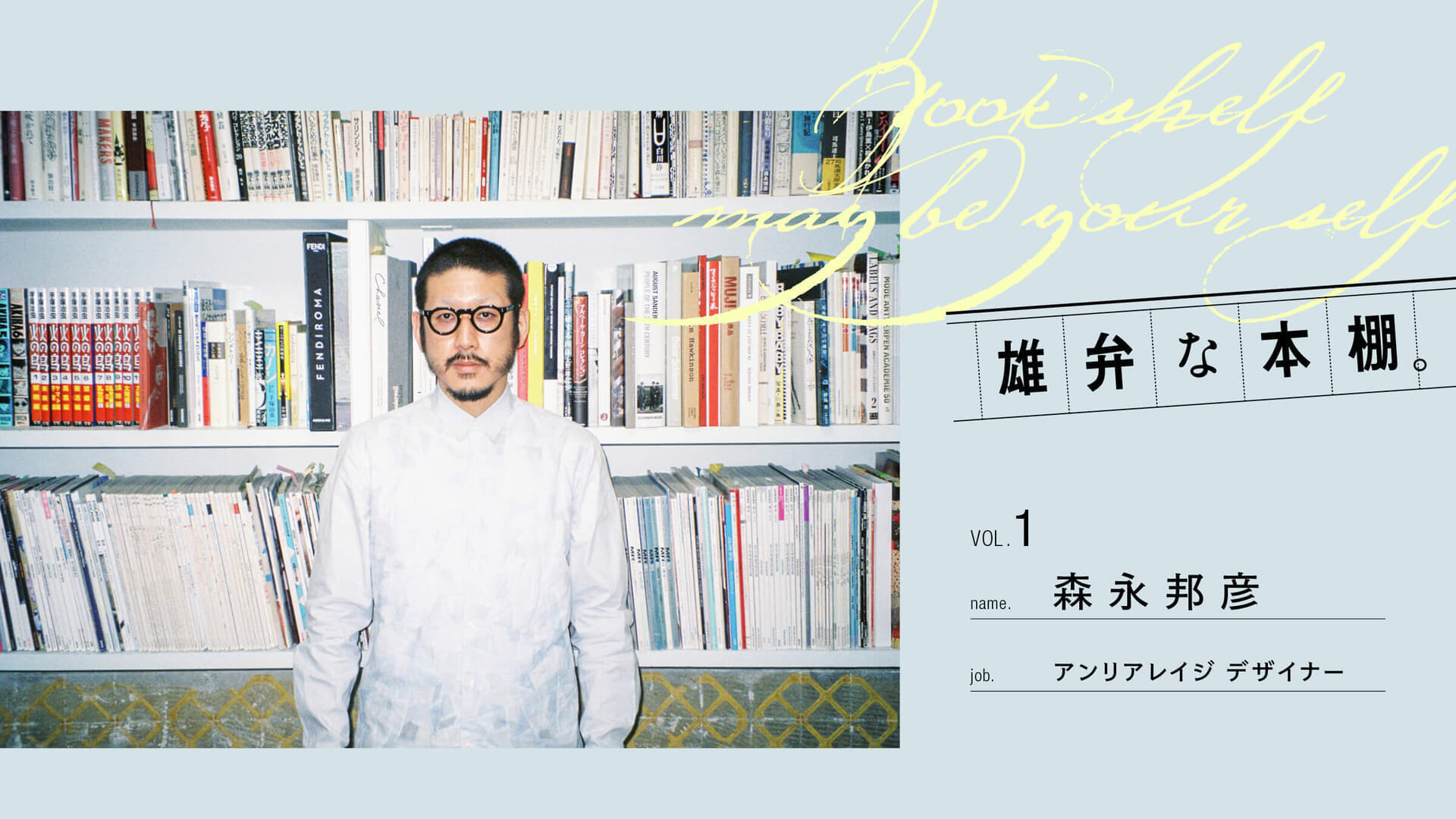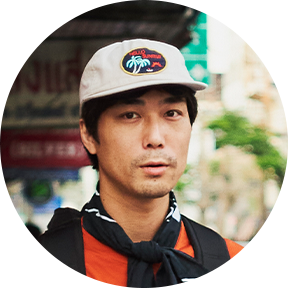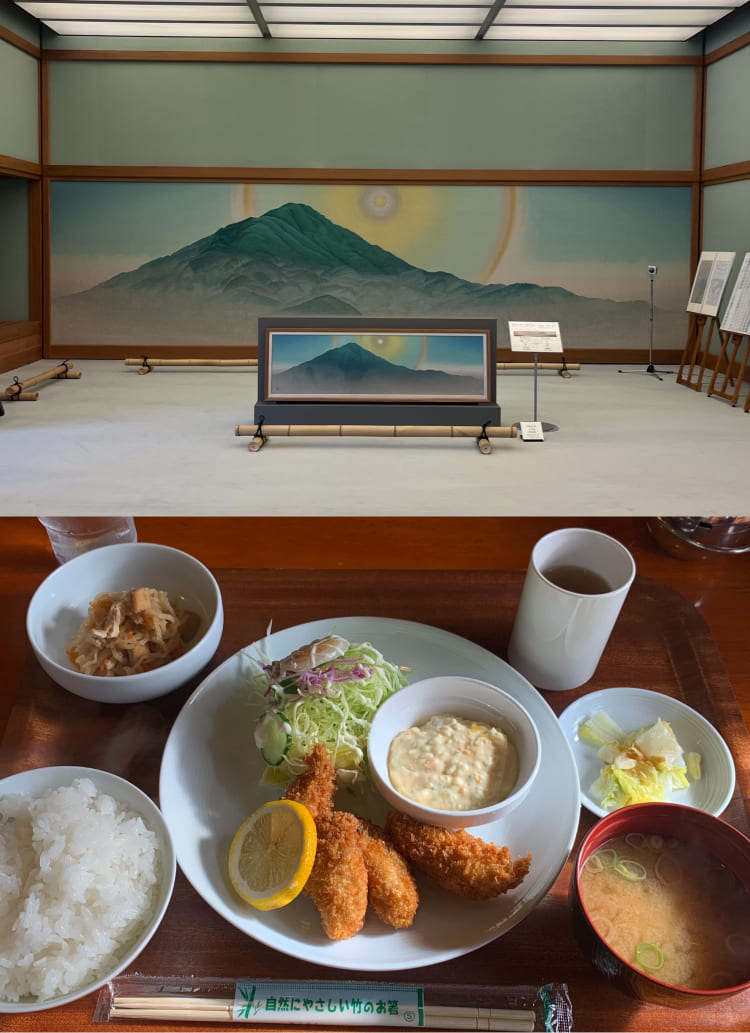A fateful encounter during my prep school days.

I've read your interviews so far, and I heard that meeting Keisuke Kanda (designer of "Keisuke Kanda") at a prep school was a big event for you.
I really liked clothes, but at the time I never imagined myself making clothes. I was not very good at expressing myself, partly because of my quiet nature. But I guess I was trying my best to buy clothes to keep myself going. When I entered my third year of high school, I still had no idea what I wanted to do in the future, so I entered a preparatory school called Yoyogi Seminar, following the flow of the entrance examinations. It was there that I met the charismatic English instructor Shoji Nishitani, who had about 1,000 students in his 400-student class.
So there was another phenomenon here, like the backcountry.
There was a line of people waiting to get into the class, just like at a live musician's concert. I lined up two hours before the class started, sat in the front row, and recorded it on my recorder to listen to later. The instructor would talk for 10 minutes out of the 90-minute class about something unrelated to the class, which was a media presence at the time when there was no Internet. He talked about movies, music, and literature that I did not know, such as Agnes Bae, Led Zeppelin, Kenji Miyazawa, and Kiyoshiro Imawano, and even the teacher's love story, all condensed into those 10 minutes. It was very interesting. Everyone came to the instructor's office after class to hear the rest of the story.

I see, it is very popular.
One day, there was a time when he brought me some of Mr. Kanda's clothes, saying, "There is a student of mine, Keisuke Kanda, a university student who makes clothes while attending Waseda University. He told me that he makes each piece of clothing as a love letter to a girl he likes, with a title and words attached to each piece of clothing. He said that he makes clothes as an expression. I was moved by his story and his clothes.
That's interesting!
I was amazed that such a thing could be done with fashion. The talk was so interesting that I went to the instructor's office for the first time to hear the rest of the talk, but I was the only one out of 400 people who came. I heard that he was giving his best talk. The instructor took me to meet Mr. Kanda, and I fell in love with him. There was no social networking service, and I was worried that if I didn't get accepted, I would never see him again. I was shocked by the fact that Kanda-san made clothes as an expression rather than a taste or form, and I was moved by his way of life.



The lower section was mainly fashion materials, the middle section was collections of artworks and manga, and the upper section was lined with novels, essay collections, and other printed materials. The books were neatly arranged and not stacked on top of each other, keeping to the amount that would fit on the bookshelf. The books were neatly arranged and not piled on top of each other, showing the meticulous nature of Anrealage's belief that "God is in the details.
Did Kanda-san sometimes teach you about books?
He recommended many. Among them, Kanda-san likes Mitsuharu Kaneko, and one of his poems says, "It is on the other side where everyone goes that you can truly believe. It was interesting to hear Kanda-san's story from the instructor, and it relieved my fears that I thought everyone else felt the same way, but that it was just me. I remember well that when we first met, Mr. Kanda told me, "Such things are what fashion is all about. In other words, I thought that believing in what only I thought was good was something that would come again and again as I continued to work in fashion. Besides Mitsuharu Kaneko, when I started making clothes, he also recommended such books as "Theory of Common Illusion" by Takaaki Yoshimoto.

Kanda-san recommended many books other than fashion, didn't you? How do you think that has influenced you, Mr. Morinaga?
There is such a thing as absorbing a designer's philosophy from a fashion book, but I also think about what colors and shapes would appear if the author's ideas were translated into fashion in a non-fashion book. It may be a habit of mine to think about what would happen if that phenomenon were to enter the realm of fashion. For example, when I was a child, I simply loved Fujiko Fujio's short stories for their worldview, but when I looked back at them again before I started making clothes, I found myself thinking about what would happen if I replaced the themes with clothes. It was a complete change from the way I used to read the book. That is also why I chose the name "Anrealage" for my brand.









